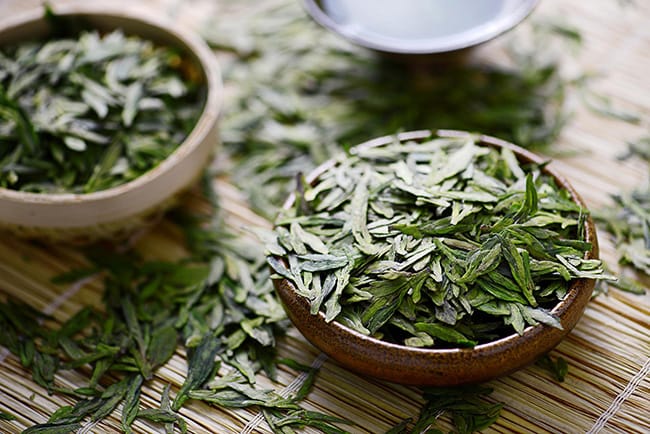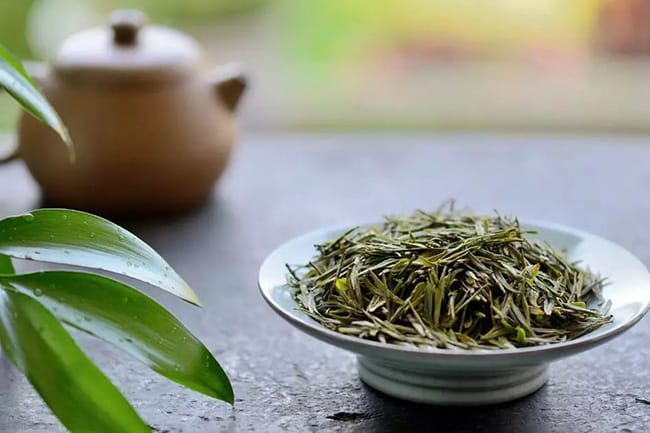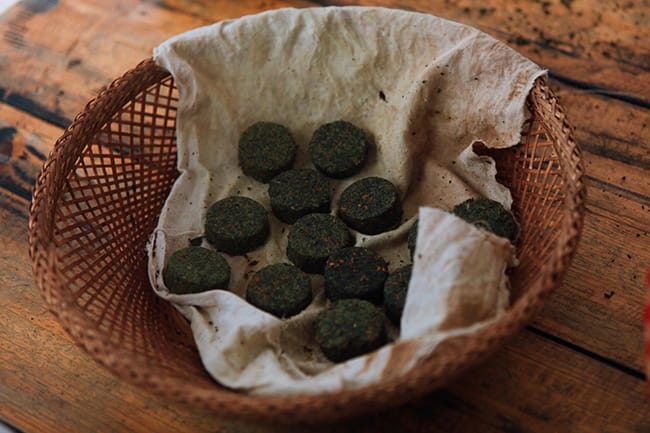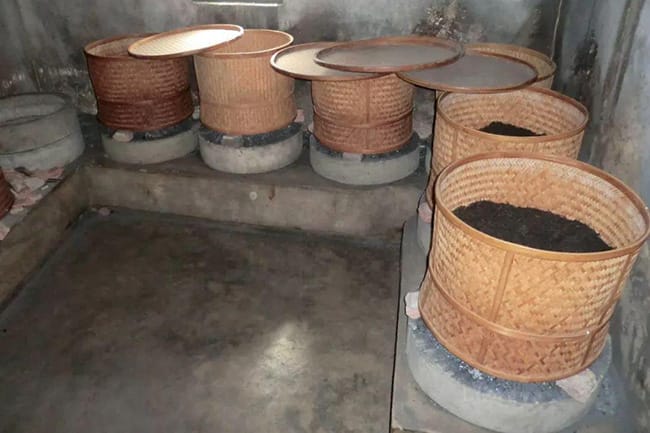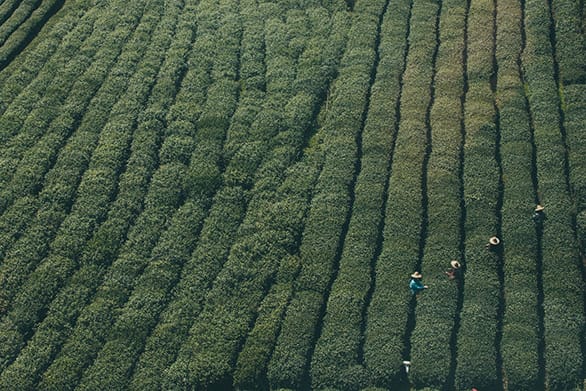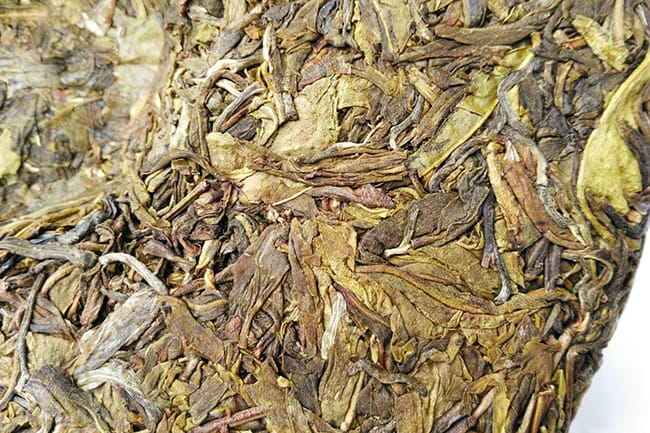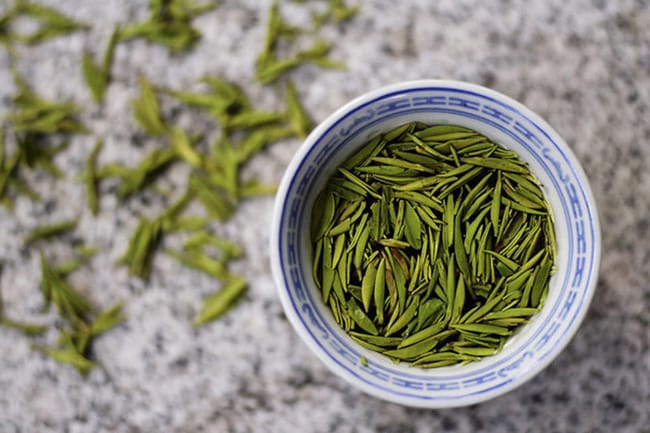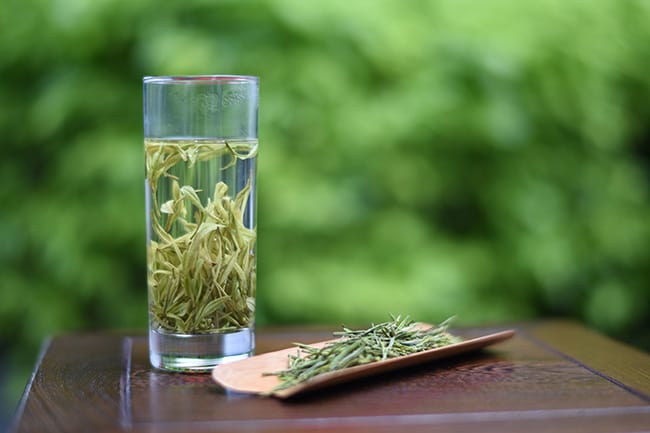Last Updated on 06/18/2022 by Desmond
Black tea is undoubtedly the best favored in the past, especially a lifestyle like English afternoon tea. But in recent years, along with people getting more care about their health and the curious about the mysterious East culture, green tea, especially the Japanese Matcha becomes a trend. Thanks to this, Chinese green tea is also getting know by more and more people.
CONTENT
What Is Chinese Green Tea
It is generally recognized that the tea-drinking culture is originated in China, and green tea is also birth in China the earliest. Almost all the Chinese green tea is in a loose-leaf style, and they got complete leaves.
As the same as the Japanese green tea, both of them didn’t been through fermenting. But the difference is that the Japanese green teas were under fixation by steaming, and the Chinese ones are by frying. So Chinese green teas taste not so much bitter, lesser astringence and plant smell; most of them also got a roasted-chestnut aroma.
China is still the largest green tea-producing country today, even though most leaves are consumed domestically. In the Chinese mind, what the important to green tea is the freshness, the fresher the best, and their appearance also beautiful. Thus, the tea shop keeper always introduces the loose-leaf green tea by describing them with the words Mingqian(harvested before 5th April) or Yuqian(harvested before 20th April).
Chinese Green Tea Brief Introduction
A consensual view on the classify of all the teas is to according to the processing methods. The Chinese green tea history can be said to include all the tea’s history. It came the earliest; the other tea types processing were invented gradually after many years.
According to the legend, at the ancient time about 5000 years ago, one of the Chinese ancestors, Shennong, also called Yan Emperor, has a transparent belly and can see his gut clearly. At that time, people know less about nature. Shennong kept try every type of herbs and wanted to understand them; that can help his clansmen live better.
One day, he ate some toxic plants and almost dying under a tree. He saw there was a small bush beside him; he decided to pick some leaves to eat. Then he checks his belly and saw that the leaves are scraping all the poison away by wriggling along with the gut. Shennong was fully recovered after all these. He decided to name these leaves Cha, which means check and clean the body.
Of course, it is just a story. But the health benefits of tea it described are believed by people. According to the exact historical documents, the Chinese started cultivating tea trees early 3000 years ago in Meng Ding Mountain, Sichuan. At that time, the primary consuming way of tea is as a dish but not a beverage.
Tea began to be consumed as a drink is in the Qin Dynasty(about 2300 years ago.) The fresh leaves didn’t been through any processing, just cooked into soup with other relishes. People in many places still drinking tea in this style, such as the Mongolian Milk Tea and the Tibetan Butter Tea. The only difference is what they are brewed with is the other fermented teas.
The tea-drinking habit began to spread and commercialized in Han Dynasty; Sichuan was the earliest tea trading center. For better storage and transport, people began to process tea. They fixated them to stop the natural fermenting, then compressing them tight. This is regarded as the earliest green tea, which is also called “block tea” or “tea cake.”
Now in Yunnan, tea masters are still processing Pu-erh green tea in this way. Worth knowing, it is generally believed that the earliest dark tea was birth from these tea cakes, which got damp.
Lu Yu, who is respected as the Sage of Tea, wrote the book “The Classic of Tea” in Tang Dynasty(about 1200 years ago), making tea became a culture from a habit. People drinking tea at that time became complex. First, they take some blocks from the tea cake, lightly roast with fire, then smash them into powder, finally making them into an infusion with salt seasoning. All these are doing under a related etiquette.
Song Dynasty(about 1000 years ago) people made drinking tea more complex; they pay more attention to the water quality and temperature. And they began to compete who can make a perfect cup of tea. And they started to give up any seasoning and pursue the most real flavor of the tea. This competition was also called “Tea Battle.”
Yes, China and Japan had frequent communication; it is believed that tea culture was to spread to Japan at that time. But the Japanese kept this tea-drinking style and optimize it, finally develop it into Japanese Sado today.
The loose-leaf tea style was birth in the Yuan Dynasty about 700 years ago. Tea cakes are still consuming by the royal, and folks have started brewing loose leaf tea. 100 years past, Zhu Yuanzhang, the emperor of the Ming Dynasty, gave an order to abolish the block tea processing, and only loose-leaf teas can be produced afterward. Yellow tea, dark tea, and white tea were invented one by one since that. It was said the green tea fixation method was changed from steaming to frying since that time too.
From the Qing Dynasty (about 300 years ago) to modern times, Chinese teas started to export to the West in vast. The West prefers the black tea flavor more at that time; thus, green tea didn’t get famous. Nowadays, people’s taste and health concept had changed (maybe related to the Starbucks Matcha Latte published reason?) and began to learn about green tea.
Due to Chinese green tea has thousands of years of history, and it can’t be surpassed in such a professional field easily. The revival of green tea influences the traditional black tea-producing countries, like India. They start producing the teas with a more and more lower-fermented degree, almost close to the Oolong tea.
Processing
I thought that green tea processing is the number two simple(the number one is white tea.) Even though there are bit differences in the processing in every region, fresh leaves after picking will be through fixation, rolling, and drying into rough tea in one day. Then the tea factories will do the further process to the rough tea, make it into products and sells.
Fixation
Fixation is for making the enzymes of the leaves inactivated by a high temperature, stopping them from going on fermenting. Steaming and frying are the most common fixation methods, and different ways will create a different flavor.
Rolling
Rolling is for shaping the leaves and reduce the water content by further heating. Some tender green tea even skips this step because the tea masters don’t want to let the “Hao” drop and keep the bud shape.
Drying
Finally, leaves will be drying, making the water content reduced to an ideal degree. The most common way is roasting; some regions will take the special wood as fuel to let the teas get a charming aroma.
In modern green tea processing, all the above steps will be done by machines. Some senior tea masters or tea farmer’s families will use the traditional way to dry the leaves into rough tea, then sell them to the tea factories for further processing. You can learn more about the Chinese traditional green tea processing in my other article.
Primary Chinese Green Tea Producing Regions
In China, almost all the tea-producing regions produce green tea. Because all types of tea are harvest begins from spring. Dark tea, black tea, and Oolong tea have not so high-require to the tender leaves; yellow tea and white tea have a limited audience. Thus, to process the tender leaves into green tea, whether it is famous or not, it can always be sold at a good price.
Famous green tea such as Longjing, Maofeng, and Ganlu are most from the places south of the Yangtze River, like Zhejiang, Anhui, and Sichuan. All these places have a common characteristic; they are located at the 30° North latitude. This is a mystery latitude; four great ancient civilizations all birth on it, and there are many miraculous legends about it. Maybe it is the great natural power that makes the green teas from these places have excellent quality.
Flavor & Features of Different Types
Green tea will be classified into four types according to the fixation and drying ways; they are Steamed Green Tea, Fried Green Tea, Roasted Green Tea, and Sun-dried Green Tea. Obvious differences in their features and flavors.
Steamed Green Tea
Steaming fixation is the oldest and most traditional green tea processing method. Now we still can see it in the Japanese matcha and Yunan Pu-erh green tea processing. Due to the steam temperature is relatively low, much chlorophyll is retained, so the leaves and infusion look more green. Typically, the steamed green tea tastes more bitter and astringency.
Fried Green Tea
Frying fixation is the most usual way in modern times. A traditional way is to put the leaves in a high-temperature pan and frying; now, most will use a machine for a better batch operation. After the leaves stop fermenting, tea masters will reduce the pan’s temperature and keep heating till they’re dried. Due to the leaves have been heating, they will get a more robust aroma and less bitter.
Roasted Green Tea
After the leaves stop fermenting, some tea masters will also stop frying. They will transport the leaves to a bamboo cage or machine for roasting drying. The products are called roasted green tea. Because the roasted heating degree is not so high as the frying, leaves will also be affected by the fuel smell(like pine), creating a different charming aroma.
Sun-dried Green Tea
After the leaves stop fermenting, they will be placed outdoor and drying by the sun. Sun-dried green tea is rare because it needs scorching sunshine and low-humidity air, many uncontrollable natural conditions. Typically only some tea plantations in Guangxi and Yunnan will produce it. And most of the time, they all be used as raw materials for dark tea production.
Main Ingredients
Green tea didn’t been through fermentation; most of the nutrition ingredients contained in leaves are retained.
Tea Polyphenols
Tea polyphenols are a kind of excellent antioxidant and the most primary nutrition ingredient of tea. They appear in the form of flavonoids, tannin, etc. Most health benefits are thanks to them.
Related Reading: Healthy Tea Diet: What Are Tea Polyphenols & 8 Excellent Benefits.
Caffeine
Caffeine is an alkaloid contained in tea, creates the bitter tastes of tea with tea tannin. Caffeine influences a lot of the human body, good or not. The good things are it can excite the nerves to boost spirits and help digestion. But it is also easy to cause insomnia.
Related Reading: Worry About The Caffeine In Tea? 4 Tips For You!
Vitamins
Green tea contains many vitamins. Even though most of them will lose during brewing, a few still can be absorbed by the body. The vitamins contained in green tea include C, E, β-carotene, B, etc.
Minerals
As the same as vitamins, the human body can not produce and synthesize minerals on its own. But they are necessary to maintain the body functions. Green tea is rich in Ca, Fe, K, P, Mg, and a few microelements like Mn, Cu, Zn; they are all important to the body.
Amino Acids
The theanine in green tea is an amino acid primarily from the tender buds, especially the tiny white fuzz. It gives a brisk mouthfeel to the green tea. Besides, theanine will also play a synergistic effect with caffeine, make a spirit stress release benefit.
What Is Chinese Green Tea Good For?
Just like we talked about before, even though the Chinese legend exaggerating describe the tea benefits, it still has a lot of help on health. Chinese ever took green tea as a medicine for a long time to cure various diseases, maintain the body, and keep healthy.
Anti-inflammation
Green tea is defined as the “cold” food in Traditional Chinese Medicine; it can cure “heat” diseases like fever. Actually, it benefits from the great antioxidant effect of tea polyphenol, which reduces inflammation in the body. In the past, once the kids got a fever, the parents will let them keep drinking tea. It also leads to a diuresis effect and helps detox.
Weight Loss
Studies showed that under the synergistic effect of caffeine and EGCG, fats will be burned faster and leads to a weight loss result. At the same time, caffeine will also stimulate the intestines and stomach, improve digestive ability, and favor your weight loss plan.
Boost Spirit
The caffeine in green tea can stimulates your nerves and boost your spirit. Having a cup of green tea after the noon break can help digestion and throw the sleepy away.
Anti-aging
As an excellent antioxidant, tea polyphenols help slow down the blood vessel from aging, leads to an anti-aging effect. It can also help prevent CVD.
Potential Anti-Cancer
Even though there isn’t any definite evidence to prove that having green tea can cure human cancers so far, it still shows an encouraging potential in vast studies. The performance of tea polyphenols is no doubt the best, no matter the antioxidation or anti-inflammatory effects of it. Many scientific reports suggest that taking green tea as a daily drink can help reduce cancer risk.
Possible Side Effects
Green tea gives many benefits to the human body, but it still may be some possible side effects.
Insomnia
Green tea contains caffeine. Intake moderate can help mind-refresh, but too much will easily lead to being nervous and insomnia. It is not recommended to drink green tea or any true teas 5 hours before bed.
May Harm the Digestive System
The caffeine in green tea can stimulate the digestive system and help digestion. But if you are drinking green tea on an empty stomach, it will make the stomach start work early. A mass digestive juice will harm the empty stomach and cause discomfort. Besides, having green tea on an empty stomach also easy to cause “tea drunk” because of the over caffeine intake.
Drug Interactions
Substances like tea tannin in green tea may interact with some drugs, making it lose the effect or lead to adverse reactions. Thus, ask your doctor before you want to have tea during drugs, or best to avoid it.
Famous Chinese Green Tea Varieties
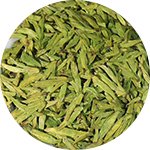
West Lake Longjing
Longjing tea can be said as the most famous Chinese green tea. It originated in West Lake, Hangzhou, also called West Lake Dragon Well tea. It is said that there was a well used to attract a dragon to drink water, which made the around full of aura, and the tea trees growing strong. Longjing tea’s harvest time long to 190-200 days per year, over 40 batches. According to the harvest season, Longjing tea can be classified into spring tea, summer tea, and autumn tea. And Mingqian Longjing is the best.
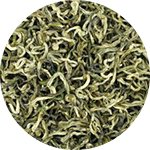
Biluochun
Biluochun is originated in Dongting Lake, Jiangsu, so it is also called Dongting Biluochun tea. It is only made from the tenderest buds in spring, rolled into curly heliciform, covered with tiny white fuzz. Biluochun tea flavor is unique, with a fruity that hard to see in other green teas. In the past, it was called “Xia Sha Ren Xiang,” which means a robust fragrant to shocking people.

Lu’an Gua Pian
Lu’an Gua Pian is also called Melon Seed tea, originated in Anhui. The name is from its melon seeds-like leaves. It is only made from the second leaf and is the only green tea without buds and stems. Lu’an Gua Pian’s processing is complex, and it’s ornamental like a show. Due to the source leaves are relatively mature and been deep-roasted, so it tastes strong and with a roasted-chestnut flavor.
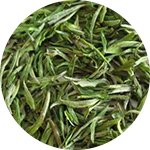
Huangshan Maofeng
Huangshan Maofeng is originated in Huangshan, Anhui, also called Huangshan Fur Peak tea. The feature of it is that every bud is with a small yellow leaf, which is just bloom; it is called “Golden Piece.” Due to it hasn’t been too much heating during the processing, Huangshan Maofeng tastes very light. It has an elegant orchid scent and mixed a slight roasted-bean aroma, so it is respected as “the fairy of the tea.”

Xinyang Maojian
Xinyang Maojian is originated in Henan. It is harvested in spring, summer, and autumn. Due to the leaves of Xinyang Maojian have many sources, different grades have different flavors, but they all taste an obvious bitter and astringence. Worth knowing, the local people love this strong flavor much, and they will make the infusion by the ratio leaves to water 50:50 to get the very, very, robust taste.

Mengding Ganlu
Mengding Ganlu is a famous green tea that originated in the tea birthplace – Ya’an Mengding Mountain, the same origin as the Mengding Huangya. The tea is processed most traditionally – frying and rolling three times, making the leaves curly tight and full of white fuzz. In Chinese, “Ganlu” means sweet dew, which describes the flavor nicely.
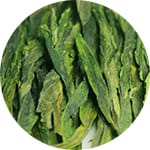
Taiping Houkui
Taiping Houkui origins in Taiping prefecture(now Huangshan district,) Anhui. It’s often been mistaken understanding as Monkey Chief tea due to the name. Unlike the other green teas, Taiping Houkui leaves are picked from the big leaf species Camellia Sinensis called Shida Cha. Under unique and complicated processing, leaves got a big, long, and flat style, very impressive. Although the infusion shows a light apricot yellow, it has a robust and fresh orchid aroma.
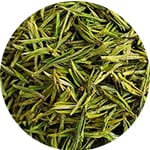
Anji Bai Cha
Many people call Anji Bai Cha as Anji White Tea, and it’s a mistake. Anji Bai Cha belongs to green tea, hadn’t been fermented during processing. Its leaves are from a unique tea plant Bai Ye No.1 – a Camellia Sinensis with temporary albinism, so the tender leaves look as white as jade. Due to the loss of chlorophyll, Anji Bai Cha has lesser tea polyphenol than other teas. But as compensation, it gets a higher theanine content. So Anji Bai Cha tastes very fresh and brisk, and without any bitterness.
How To Store
Almost all the Chinese green teas are harvested in spring; the summer-picked leaves are regarded as lower quality. You can see that the most significant characteristic of Chinese green tea is freshness. So the recommended shelf life of most of the products on the market is typically 12-18 months. Even though slightly over the deadline will not significantly affect the flavor, it is still best to finish consuming it in 1 year to better experience the Chinese green tea charm.
Of course, finish drinking all the leaves at once seems not possible. Once we unwrap the package, then we should pay attention to the following points during the storage:
Keep Dry. The dried leaves are very easy to absorb the water in the air. In history, the invention of dark tea is said because the green tea got damp. But never try to damp the green tea to get dark tea; it will only break the flavor. Please ensure the place you store the tea is dry enough.
Keep Airtight. You do not need to worry about the Chinese green teas on this problem, which have a small individual sealed package. But to the loose leaves in a large package, once you unwrap it and take the leaves out, remember to push all the air out and seal it well again.
Avoid High-temperature. A high temperature will let the green tea fermenting again or breeds bacteria. Typically, tea factories will store the leaves in a warehouse at 0-5 ℃. Suppose you are going to keep the green tea in a fridge, ensuring no problem with the package airtightness. Besides, tea flavor is also easily polluted by the smell from the other foods in the fridge. If the smell problem is serious, consider storing the leaves in another relatively low-temperature place.
Avoid Sunshine. Dried leaves will still happen a photochemical reaction under a long time of direct sunshine, losing the color and flavor. So it is not recommended to store the tea in a glass container. Besides, a long time of sunshine will also cause a high-temperature problem.
Related Reading: Choose the best tea storage container for loose leaf tea.
How To Make Chinese Green Tea
It’s simple to make Chinese green tea; you can even no need to wash the leaves. Because most of them are tender buds and leaves, the water temperature should not be too high so that the leaves won’t be cooked. Typically, 85℃ will be suitable.
Brewing with a glass cup (the most common and simple way) 3
- Prepare and preheat a 300ml glass cup;
- Put 5-8g leaves in;
- Adding 85℃ water in gently till to the 7/10;
- Steep for about 30 seconds;
- Enjoy;
Brewing with a Gaiwan(Show your friends Gongfu Tea Ceremony) 3
- Prepare and preheat a 250ml white ceramic Gaiwan;
- Put 3-5g leaves in;
- Adding 85℃ water in gently till to the 4/5;
- Cover and steep for about 20 seconds;
- Pour the infusion into a fair cup to equal the concentration;
- Share to each cup then enjoy;
Different Chinese green tea type has its best steeping time and brewing limit; you should manage them according to the actual condition. Typically, the tea will lose all the taste after the fifth brew.
